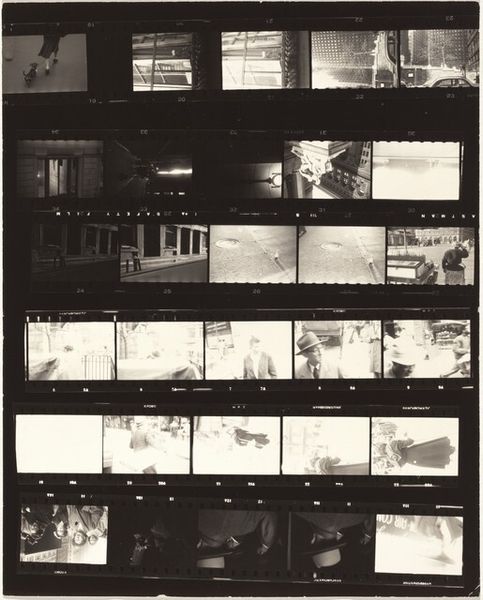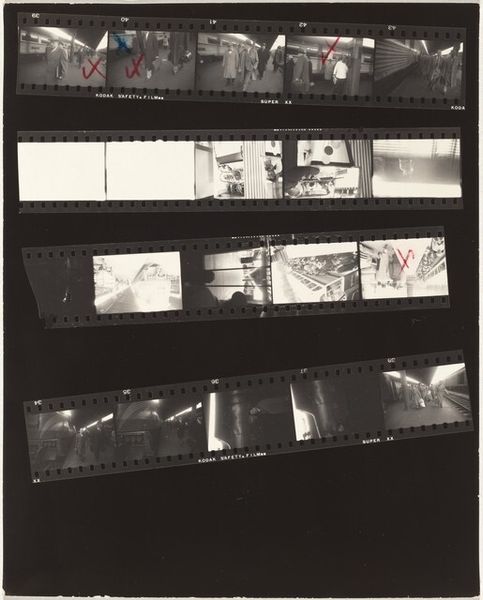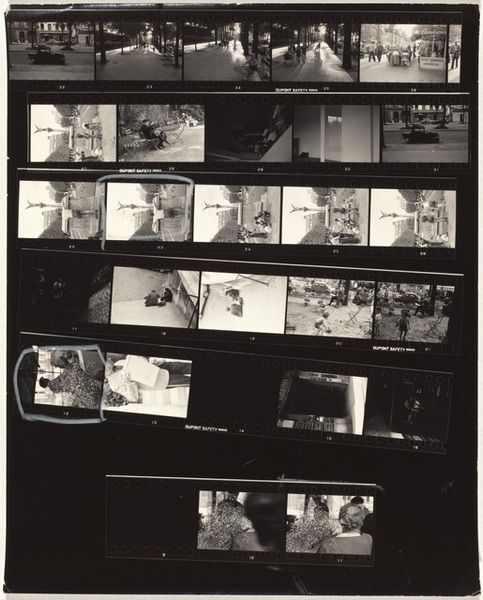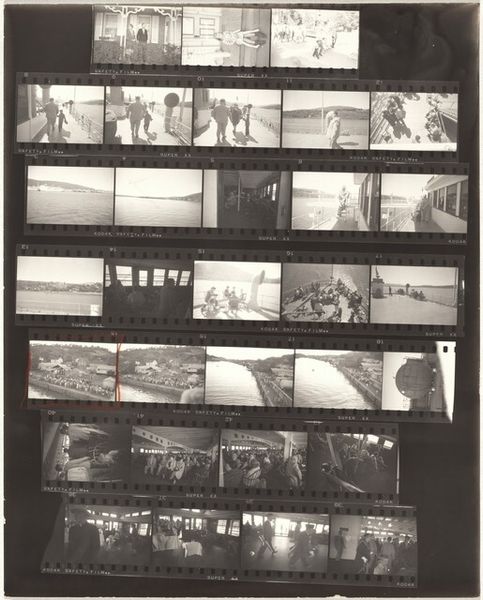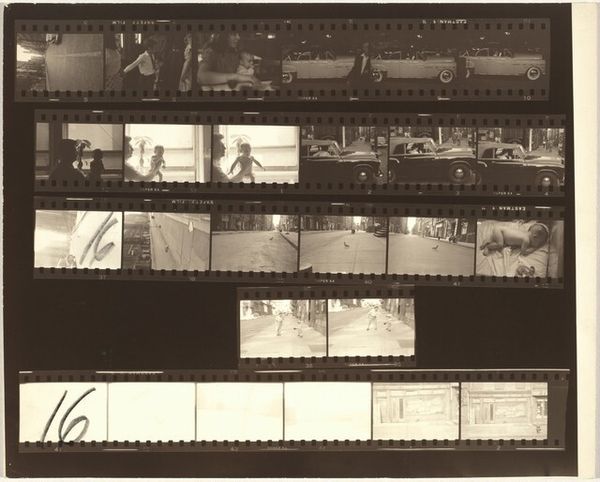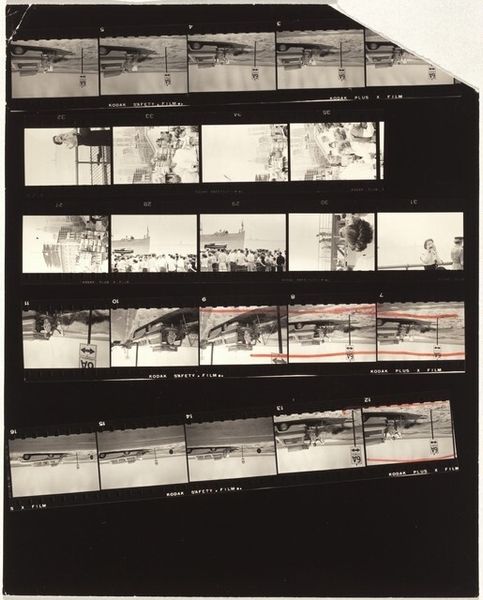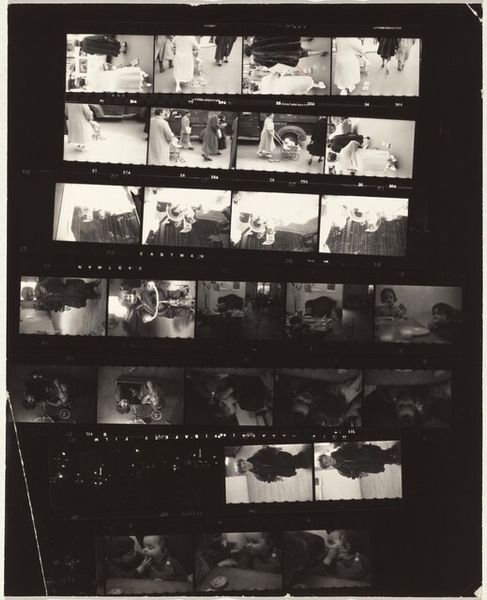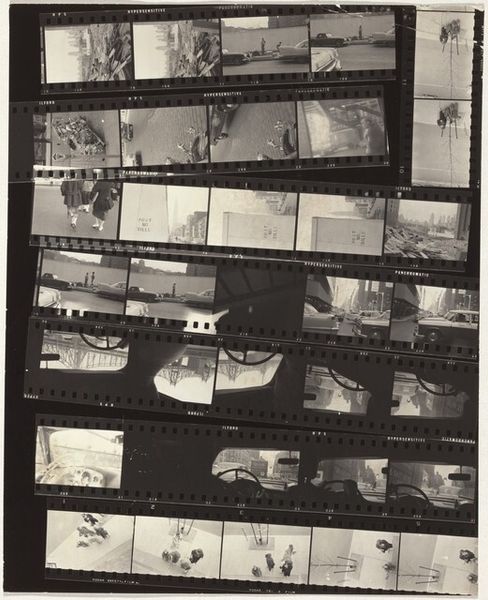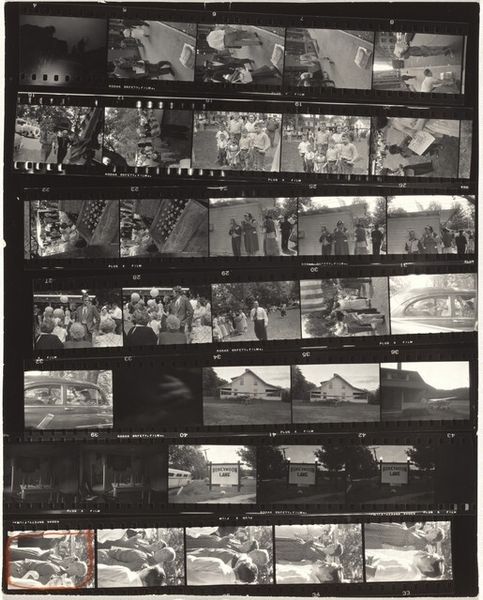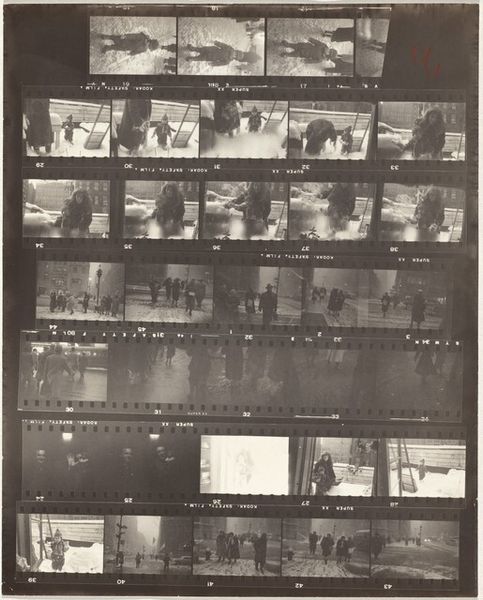
photography, gelatin-silver-print
#
portrait
#
street-photography
#
photography
#
gelatin-silver-print
#
realism
Dimensions: sheet: 25.3 x 20.3 cm (9 15/16 x 8 in.)
Copyright: National Gallery of Art: CC0 1.0
Curator: Here we have Robert Frank's "Pablo and Karen—New York City no number," a gelatin silver print from 1954. It's not a typical photograph; instead, it presents an entire contact sheet. What is your first impression? Editor: My immediate thought is that this format makes me consider time, process and sequence—all very interesting, formal concerns. The tight registration of each frame on the sheet certainly introduces rhythm. Curator: Exactly. Frank gives us a peek behind the curtain, highlighting the act of creating, selecting, and presenting images, reflecting a certain counter-cultural mood. You see children—perhaps siblings—posed for a shot within the longer sequence of this street photography. Given the context of postwar America and anxieties regarding identity, childhood, and urban life, Frank’s choice to leave in all the mess, the failures as well as possible successes, strikes me as deliberate, honest and, well, politically salient. Editor: It's intriguing how this contact sheet offers multiple perspectives on the subjects in ways that complicate a clear, representational, singular reading. Structurally, this encourages a focus on tonal shifts. Frank coaxes something somber from this urban light, guiding our eye down and around. The artist directs the way in which we are seeing the composition; one could view it like a musical arrangement of blacks, whites and greys, its value lies within this aesthetic quality. Curator: I see this not only as a means to demonstrate aesthetics and choices but to open conversations about identity in urban environments. Consider how postwar culture portrayed idealized lives; in contrast, this contact sheet provides us an authentic glimpse of society, revealing its tensions. Editor: I find that reading to place less emphasis on the surface value, the structural beauty, that I view as intrinsic to understanding the artwork, but I do appreciate the depth that consideration for time and society brings. Curator: It is interesting how considering that relationship provides us a contemporary space to think about both Robert Frank’s process and our experience looking and engaging with images today.
Comments
No comments
Be the first to comment and join the conversation on the ultimate creative platform.
